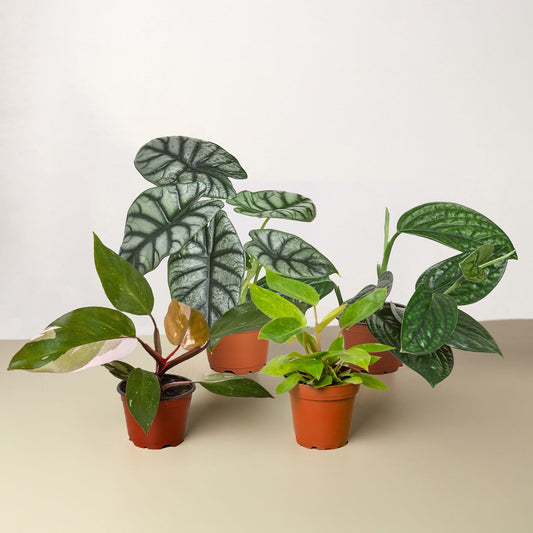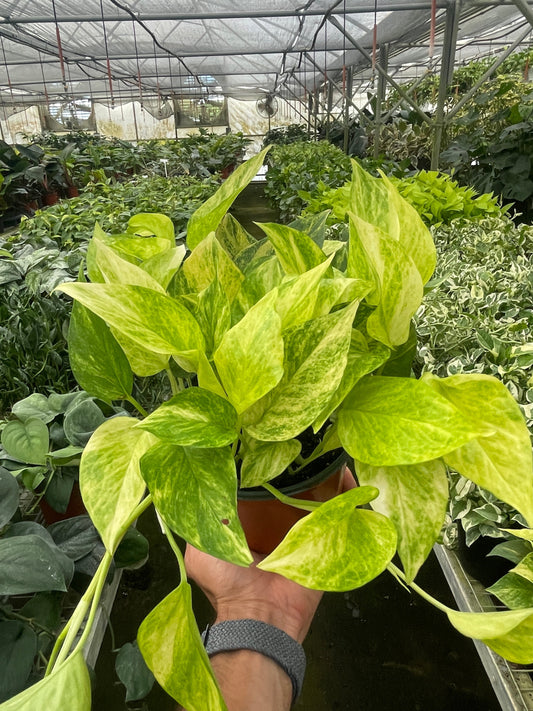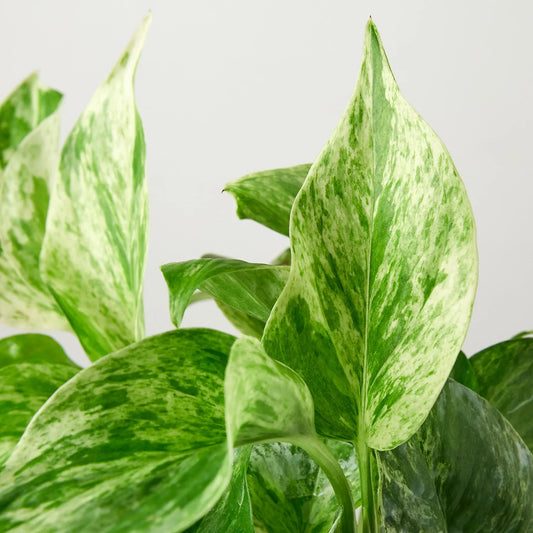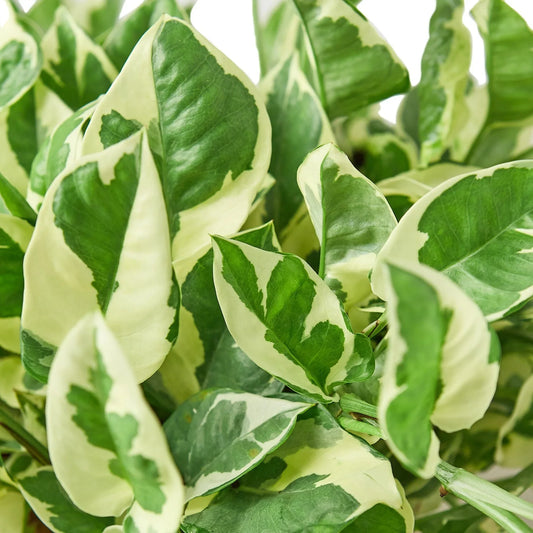How Much Humidity Does My Orchid Need?
Cafe Planta Team
Orchids are stunning plants that can bring a touch of elegance to any home. But, as some of you might have discovered, they have a bit of a reputation for being temperamental. One of the key factors in keeping these beauties happy and healthy is understanding their humidity needs.
In this article, we’ll chat about why humidity is so important for orchids, how much they need, and some practical tips for creating the perfect environment for them. Whether you’re a seasoned orchid lover or a curious newbie, you’ll find some handy insights here.
Why Humidity Matters for Orchids
Orchids are native to tropical and subtropical regions, where humidity levels are naturally high. This means they’ve evolved to thrive in environments with plenty of moisture in the air. But why is humidity so crucial for these plants?
The answer lies in their roots and leaves. Orchids have unique root systems designed to absorb moisture from the air. Unlike typical houseplants, their roots don’t grab water from the soil but from humidity. This makes the air around them just as important as the soil they’re planted in.
Moreover, the leaves of orchids are quite sensitive and can lose moisture quickly if the air is too dry. This can lead to a whole host of issues, including wilting, browning, and eventually, the demise of your cherished plant. So, ensuring the right humidity level is a fundamental step in orchid care.
Understanding Optimal Humidity Levels
So, what’s the magic number when it comes to humidity levels for orchids? Generally, these plants prefer a humidity level between 50% and 70%. This range closely mimics their natural habitat, providing the perfect balance for their growth and wellbeing.
Of course, not all orchids are created equal. Some species might be a bit more forgiving, while others may require more precise conditions. Phalaenopsis, for instance, is one of the most common and adaptable types, thriving anywhere from 50% to 70% humidity. On the other hand, more exotic varieties might demand a stricter environment.
It’s also worth noting that the time of year can affect humidity levels. During the winter months, indoor air tends to be drier due to heating systems. This means you might need to make some adjustments to maintain that ideal range.
Measuring Humidity in Your Home
Before you get into the nitty-gritty of adjusting humidity levels, it’s important to know where you currently stand. Luckily, measuring humidity is straightforward thanks to tools like hygrometers. These handy devices can provide an accurate reading of the moisture level in your home.
You can find hygrometers at most garden centers or online. When using one, place it near your orchids for the most accurate reading. It’s a simple but effective way to keep tabs on your plant environment.
If you’re tech-savvy, there are even smart hygrometers that connect to your phone, allowing you to monitor humidity levels in real-time. This can be particularly useful if you’re away from home and want to ensure your orchids are still in a happy place.
Boosting Humidity Levels
If your hygrometer shows that the humidity in your home is too low, don’t panic. There are several cheap and cheerful ways to boost moisture levels without turning your living room into a sauna.
- Misting: A quick spritz with a spray bottle can give your orchids a nice humidity boost. Just be careful not to overdo it, as wet leaves can lead to fungal problems.
- Humidifiers: A humidifier can be a game-changer, especially during the winter months. Look for models with adjustable settings to fine-tune humidity levels.
- Humidity Trays: Place a shallow tray filled with water and pebbles beneath your plant’s pot. As the water evaporates, it increases the surrounding humidity.
- Grouping Plants: Placing your orchids together with other plants can create a microclimate with higher humidity. It’s a simple trick that can make a big difference.
Remember, it’s all about finding what works best for your home and your plants. You might need to experiment a bit to get things just right.
Dealing with Excess Humidity
While too little humidity is a common problem, it’s also possible to have too much. High humidity can lead to issues like mold, rot, and even pest infestations.
If you suspect your home is too humid, especially in areas like bathrooms or kitchens, consider these tips:
- Ventilation: Ensure proper airflow by opening windows or using fans to circulate air.
- Dehumidifiers: These can pull excess moisture from the air, helping to maintain a balanced environment.
- Reduce Watering: If the air is already moist, your orchids won’t need as much water. Be cautious not to overwater.
Keeping a close eye on your plants can help you spot signs of excess humidity, such as mold or mildew, so you can take action before things get out of hand.
Creating a Humidity-Friendly Space
Designing a space that naturally supports your orchid’s humidity needs can be incredibly rewarding. You don’t need to transform your home into a greenhouse, but a few thoughtful adjustments can go a long way.
Consider setting up a dedicated plant area near a window, where light and humidity can work together to create a cozy spot for your orchids. Using decorative bowls or jars of water around your plant display can also subtly increase humidity without being obtrusive.
If you’re feeling creative, consider a terrarium or an enclosed garden space. These setups naturally trap moisture and are a fun way to display your orchids and other tropical plants.
Signs Your Orchid Needs More Humidity
Even with the best intentions, it’s possible to misjudge your orchid’s needs. Here are some tell-tale signs that your plant might be craving more moisture:
- Leaf Droop: When the leaves start to droop or wrinkle, it’s often a sign of dehydration.
- Brown Leaf Tips: Dry, brittle leaf tips suggest the air is too dry.
- Bud Blast: If buds drop before blooming, low humidity might be the culprit.
By paying attention to these signals, you can make timely adjustments to your humidity strategy and keep your orchid thriving.
Common Mistakes to Avoid
We all make mistakes, especially when learning something new. Here are a few common pitfalls to watch out for when managing orchid humidity:
- Over-Misting: While misting can help, overdoing it can lead to fungal infections. Keep it light and airy.
- Ignoring Seasonal Changes: Remember to adjust humidity efforts with the seasons. Winter heating can dry out the air, requiring more attention.
- Neglecting Plant Placement: Placing orchids in drafty or overly sunny spots can affect humidity levels more than you might think.
By avoiding these common mistakes, you can set your orchids up for success and enjoy their stunning blooms for years to come.
Final Thoughts
Orchids are fascinating plants that, with the right care, can thrive in your home. By understanding their humidity needs and making a few simple adjustments, you can create an environment where your orchids will flourish.
At Cafe Planta, we’re here to help you with your plant journey. Whether you need advice or are looking for unique plant additions, we’d love to hear from you. Feel free to email us or DM us on Instagram. We believe in the power of plants to connect us with nature and each other, and we look forward to helping you create a beautiful, thriving plant collection in your home.



















